Ancient Corinth was a powerful Greek city-state built in the Peloponnese 82 km southwest of Athens. It was inhabited since the Neolithic time and Homer describes Ancient Corinth as a ‘rich’ city. Its strategic position near the Corinth Canal and fertile ground made Corinth a vital trade center.
It soon became so rich that it founded colonies in Corfu and Syracuses. Ancient Corinth started building monuments that reflected its importance such as the Temple of Apollo and other public buildings. The city also became a Christian landmark as the Apostle Paul lived here for 18 months.
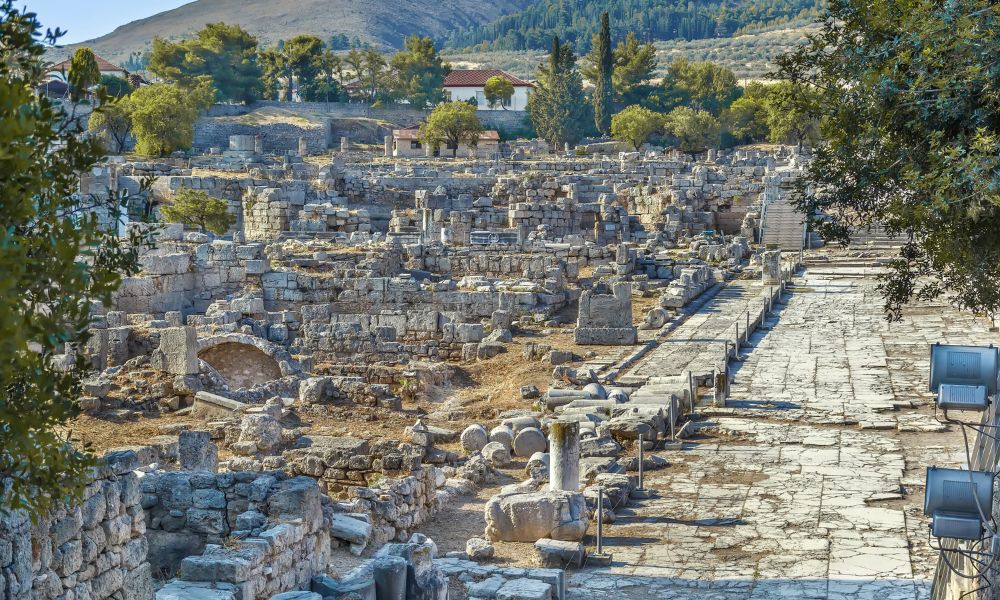
This article explores the landmarks of Ancient Corinth, the Corinth Canal, and Acrocorinth as I have visited the place many times. Additionally, I highlight a couple of nearby sites, Isthmia and Kechries, that are easily accessible from the area. It’s worth noting that Kechries served as the departure port for Apostle Paul after concluding his second missionary journey.
*Some of the links are affiliate links. That means I may make a commission if you click and buy at no additional cost.
Corinth Canal
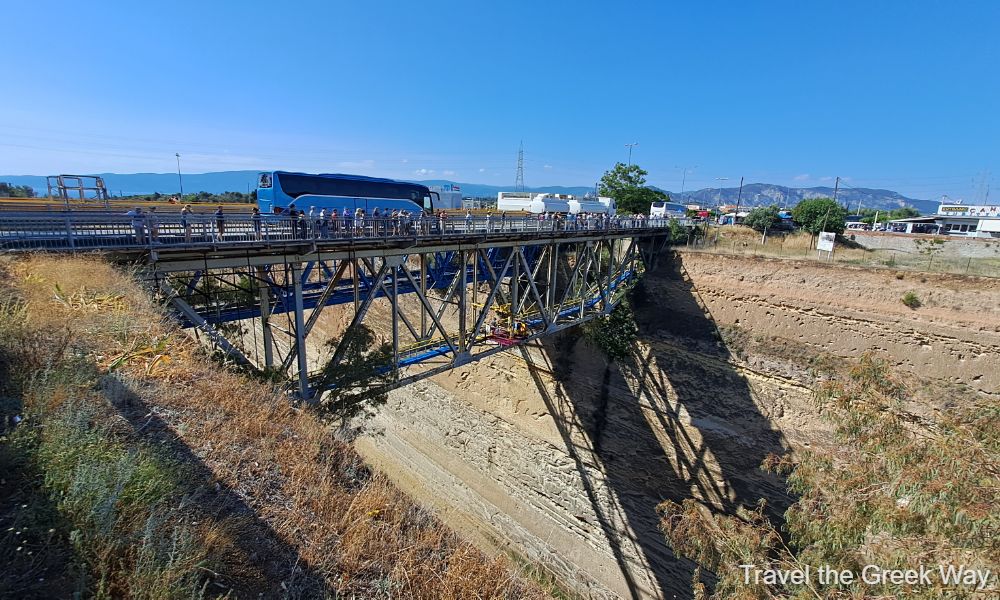
Corinth Canal or the Isthmus of Corinth is a narrow canal, 6 km long. It connects the Corinthian Gulf (the western part of Greece towards Italy) with the Saronic Gulf and the Aegean Sea. It is 12.5 km before we reach Ancient Corinth.
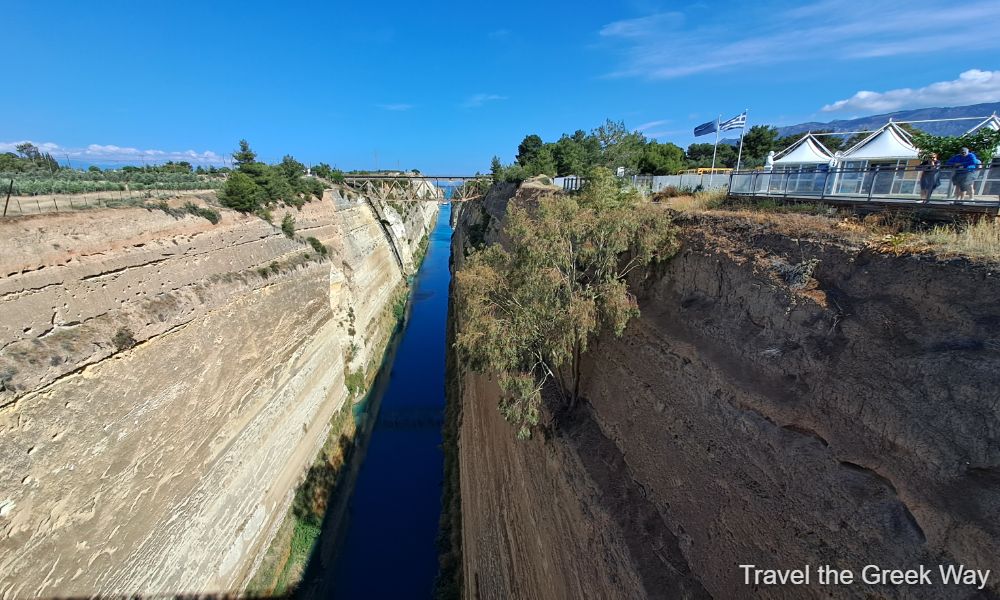
Over 10,000 boats and cruise ships cross the canal to avoid navigating the 400 km around the Peloponnese annually.
Periandros, the ancient ruler of Corinth, was the first to try to dig up the Corinth Canal. This was not possible at the time as there was no technical know-how. Instead, Periandros constructed Diolkos, a special road on which ships were pulled from the Corinthian Gulf to the Saronic Gulf.
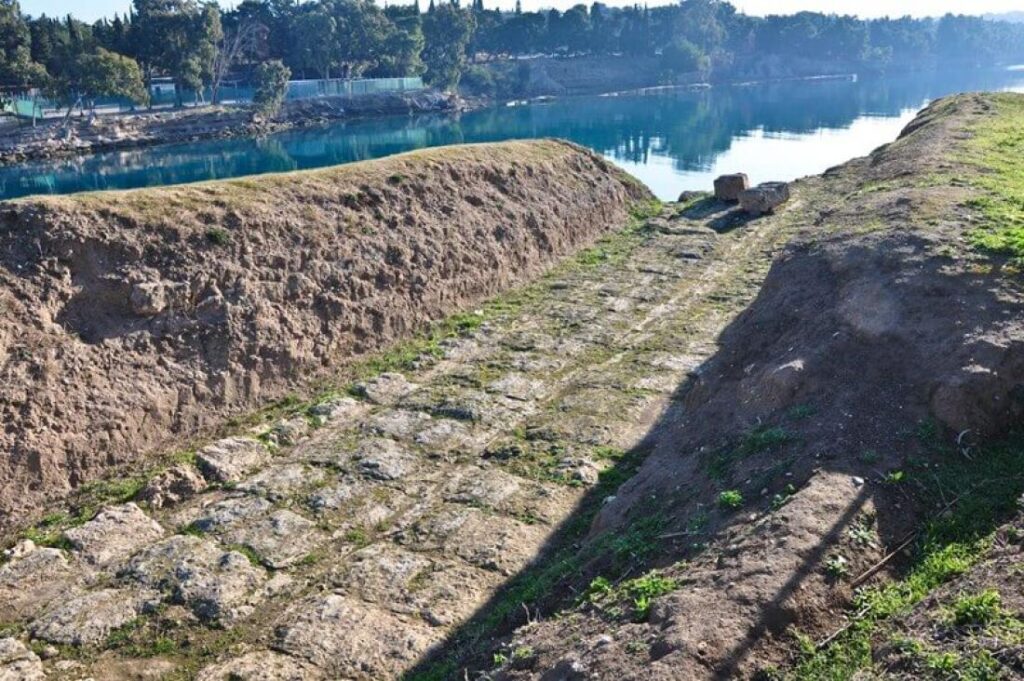
The historians think that slaves – and not animals – were dragging the ships on platforms, which must have been a real hardship. This kind of transportation went on for many centuries and you can see traces of it today in the area of Isthmia.
As soon as Greece became independent from the Ottomans (after 1821), the Greek authorities started thinking again about opening the Corinth Canal.
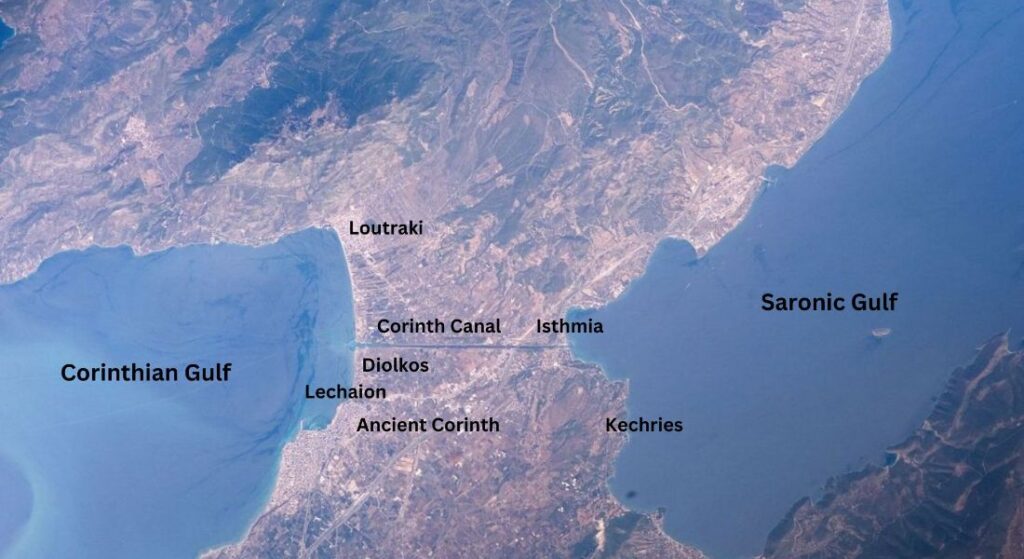
The companies that were commissioned with the construction of the canal worked for 11 years and it was officially finished on 25 July 1893. However, as today’s ships are quite large and will get stuck if they try to cross the canal, only smaller ships can pass through.
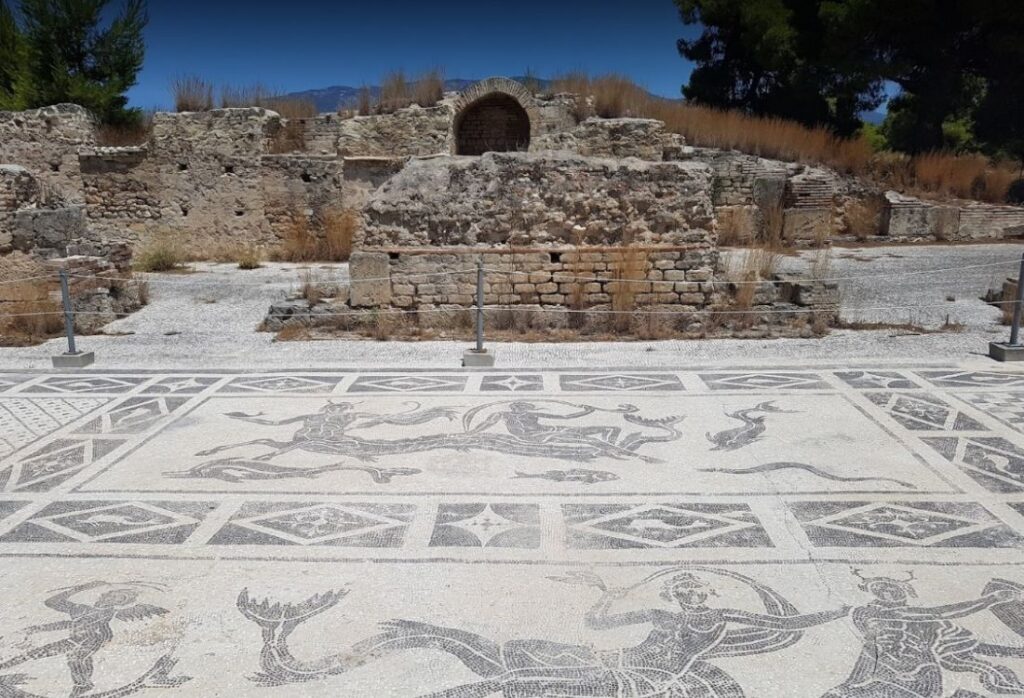
Near the Corinth Canal, you can also visit the Archaeological Site of Isthmia. It contains exhibits from Diolkos, the Temple of Poseidon, the Raches Settlement, and a beautiful mosaic from Kechries port.
The Isthmia Museum is open between 8.00 and 15.00 but it is closed on Tuesdays. The entrance fee is €2.
Ancient Corinth
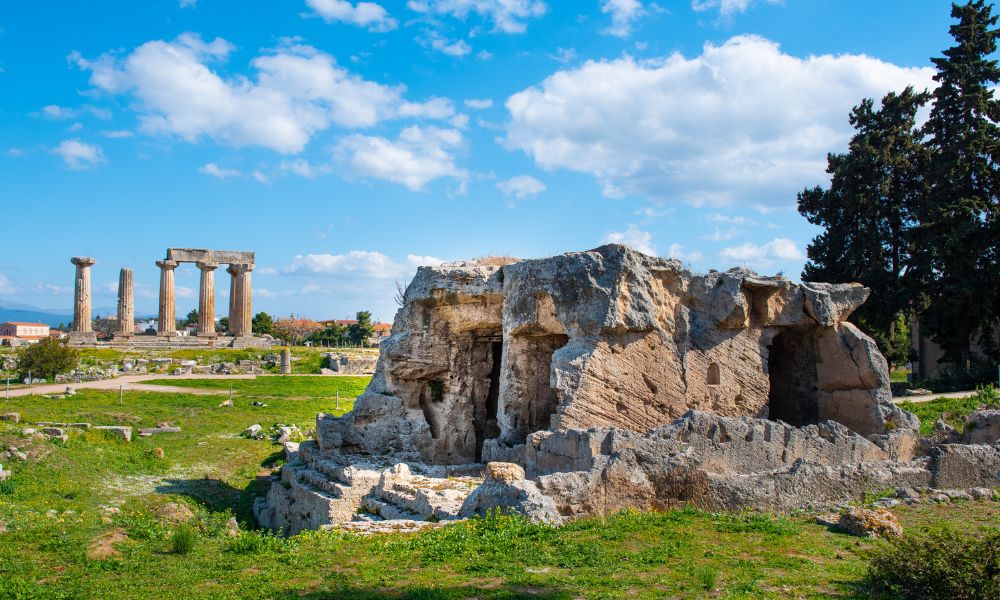
As soon as you pass by the ticket kiosk you will see on your left side, the large Glauke Fountain. It was curved on the western slope of the Hill of the Temple of Apollo in Roman times. If you continue straight ahead, you are directed toward the small yet exquisite Archaeological Museum of Ancient Corinth.
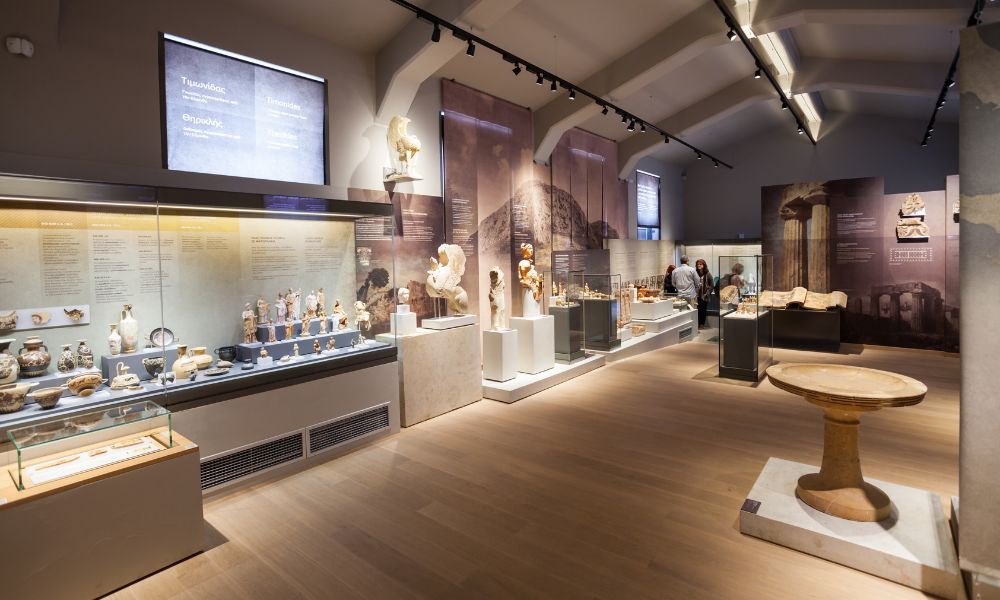
The museum houses the numerous findings of the excavations in the archaeological area. Its construction was undertaken by the American School of Classical Studies, thanks to a donation from Ada Small Moore.
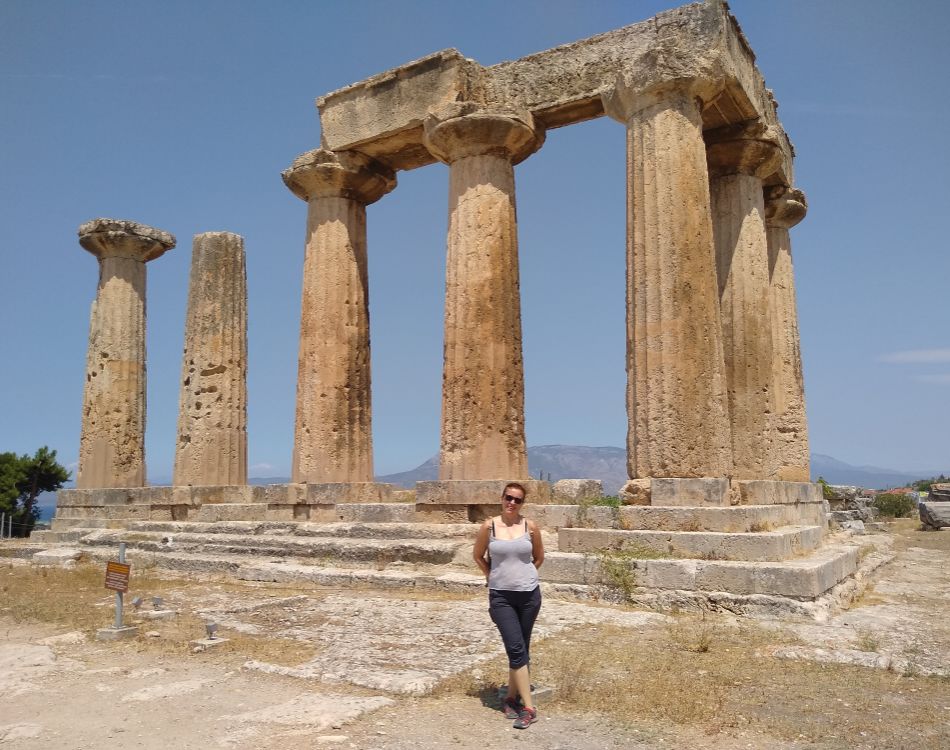
When you exit the museum, you visit the most striking monument in Ancient Corinth, the Doric Temple of Apollo. The Temple was built around 560 BC, a monument indicating how glorious Corinth used to be. Today, only seven standing columns of the Temple’s foundations are preserved.
To the north of the Agora, you can walk down Lechaion Street, which dates back to the 4th century BC.
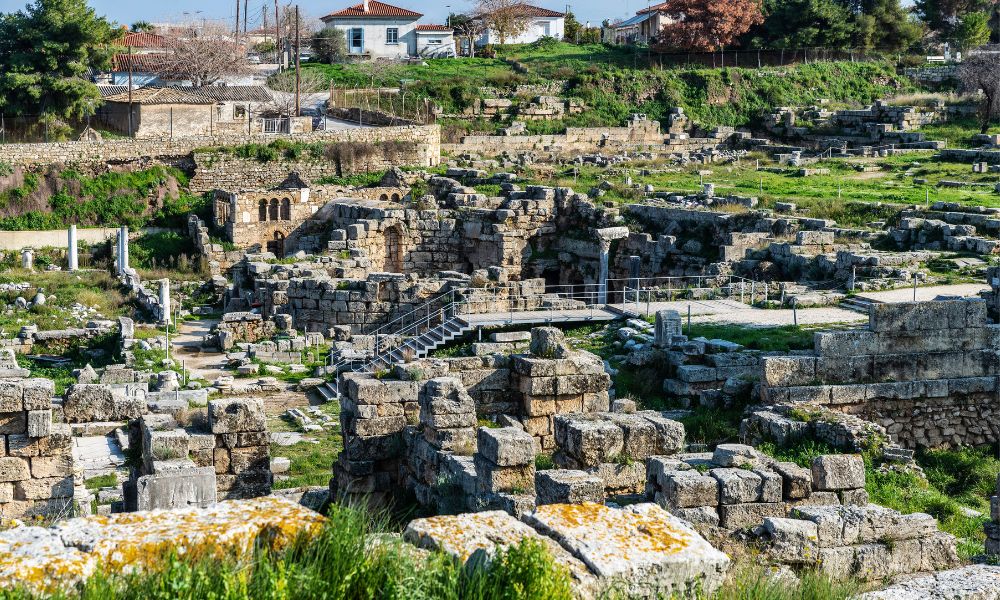
Around Lechaion Street is where the rich and famous of the time built their extravagant homes. The Basilica Iulia, a courthouse built by Emperor Claudius in 44 CE, can be found in the east part of the Agora. As you walk around, you will find remains of other temples, public baths, pottery factories, a gymnasium, and a large triumphal arch.
Director emeritus of the excavation at Ancient Corinth run by the American School of Classical Studies in Athens, Mr. Charles K. Williams, has spent a good 31 years digging at Ancient Corinth. You can visit their excellent website on the History of Corinth.
Apostle Paul in Ancient Corinth
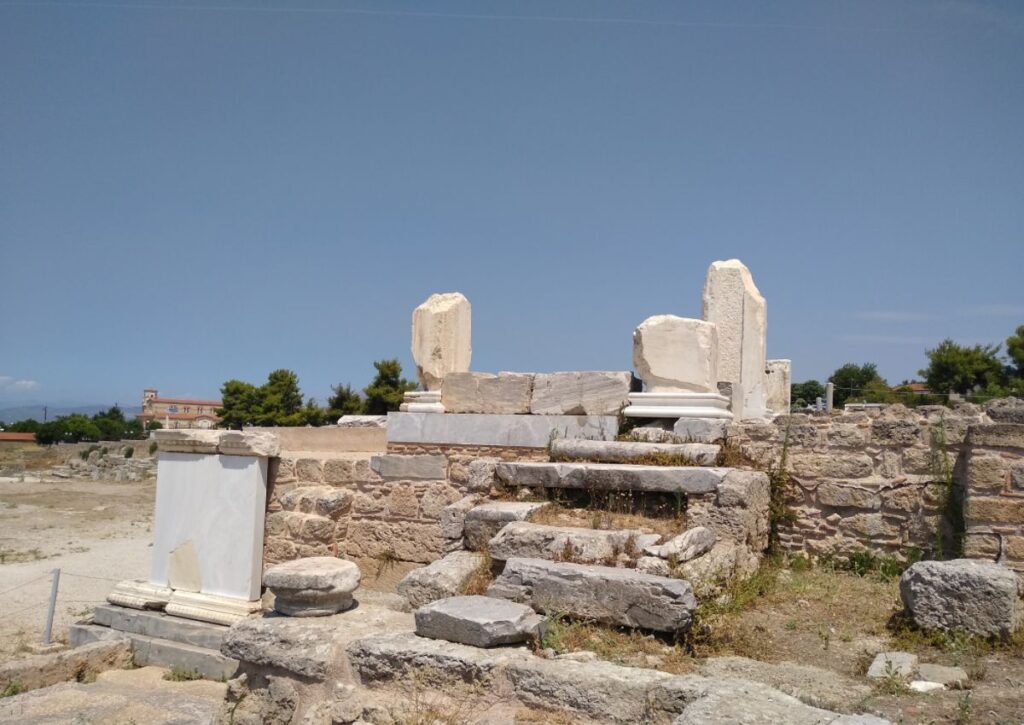
Apostle Paul or the Apostle of the Nations arrived in Corinth in the mid-1st century CE and stayed with the Jewish tentmakers Aquila and Priscilla for 18 months. Apostle Paul preached inside the Ancient Corinth site, in the specific Bema spot – an elevated area where all the public speeches were held.
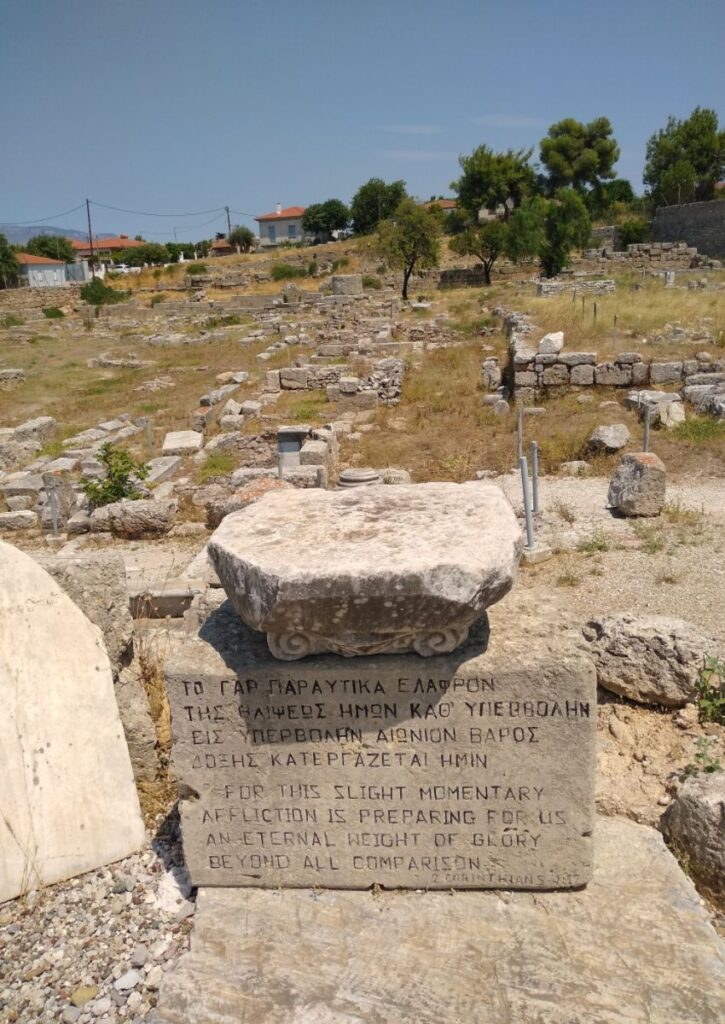
After 18 months, Apostle Paul left for Ephesus from the ancient port of Kechries having established a strong and well-organized church in Corinth.
It is also worth visiting the impressive church devoted to the Apostle Paul in the center of modern Corinth town.
Interesting Book on Apostle Paul: “After Paul Left Corinth: The Influence of Secular Ethics and Social Change“.
Tips for Visiting Ancient Corinth
How much is the Entrance Ticket?
The general entrance ticket to Ancient Corinth from April – to October is €8 and €4 from November to March.
What is the Time of Operation?
November 15th-March 31st: 8:30 -15:30 (Tuesday closed)
From April 11 to August 31, 08:00-20:00. From September 1 to September 15, 08:00-19:30. From September 16 to September 30, 08:00-19:00. From October 1 to October 15, 08:00-18:30. From October 16 to October 31, 8:00-18:00.
Is Ancient Corinth Accessible?
Yes, it is. There is flat access.
Is there a WC inside the Ancient Corinth?
Yes, there is, free of charge, inside the museum
Is there a shop inside the Museum?
Yes, there is a small shop.
How much time do I need for the Site?
Generally speaking, you should plan to spend at least an hour. If you have a licensed guide it might take up to 90 minutes.
Can I drink or eat inside the Ancient Corinth?
You are not allowed to eat or drink inside any archaeological site in Greece, only water is allowed to be carried around. There is no café/restaurant inside the site.
Do I need cash or do they accept credit cards?
You can pay either with cash or with a credit card at the entrance of the site. You can contact them at +30 27410 31207.
Acrocorinth, the Acropolis of Ancient Corinth
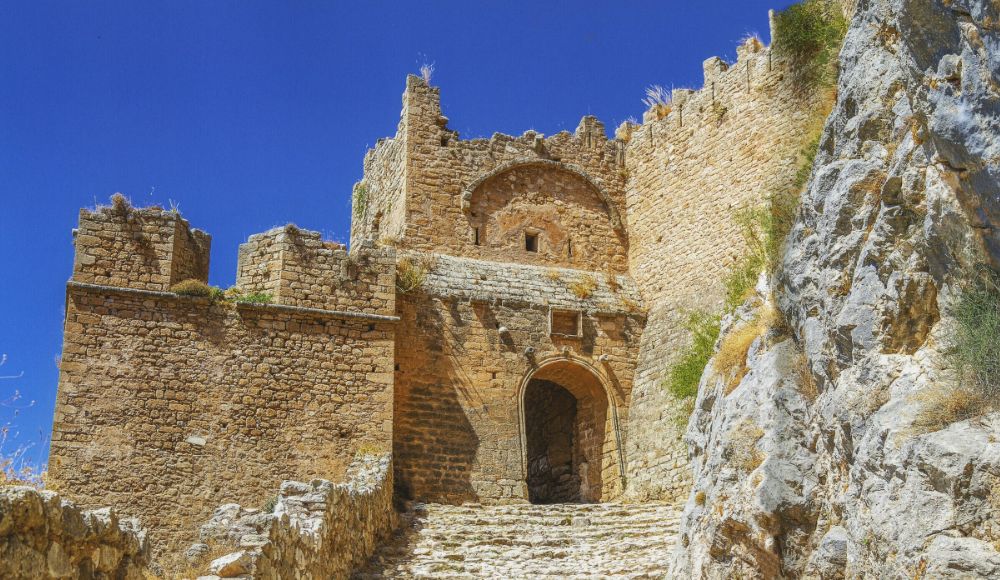
Acrocorinth, standing at 574 meters on a large monolithic rock, is the most significant and largest fortified castle in Greece.
It was first fortified in the 6th or 7th century BCE. Inside the courtyard, the famous temple of Aphrodite was built, where the priestesses of the goddess practiced sacred prostitution.
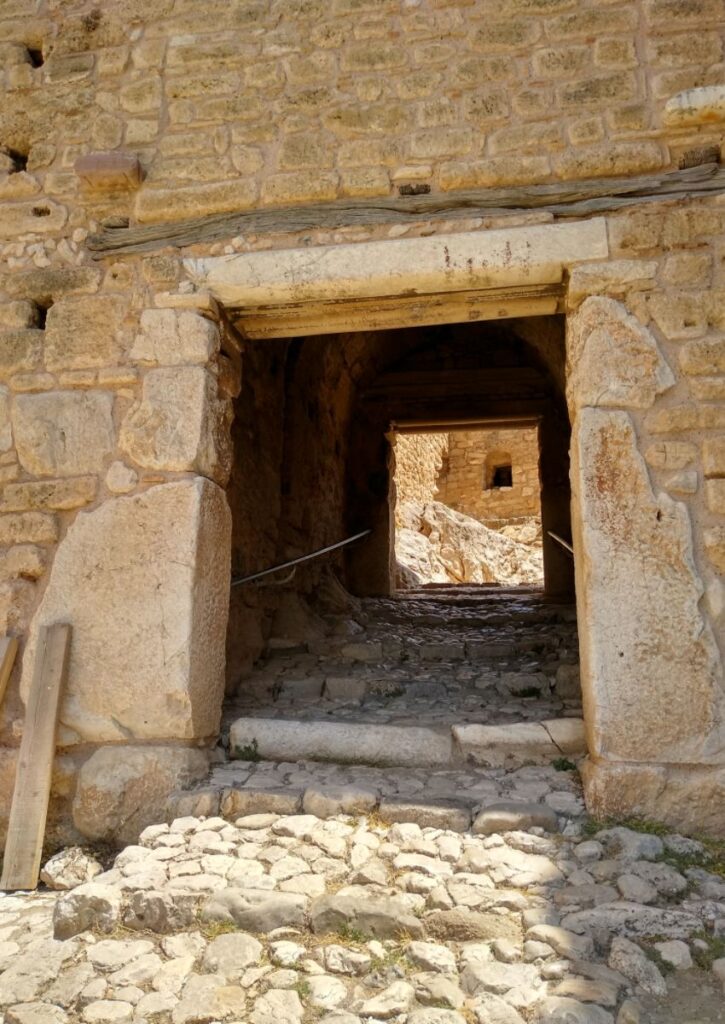
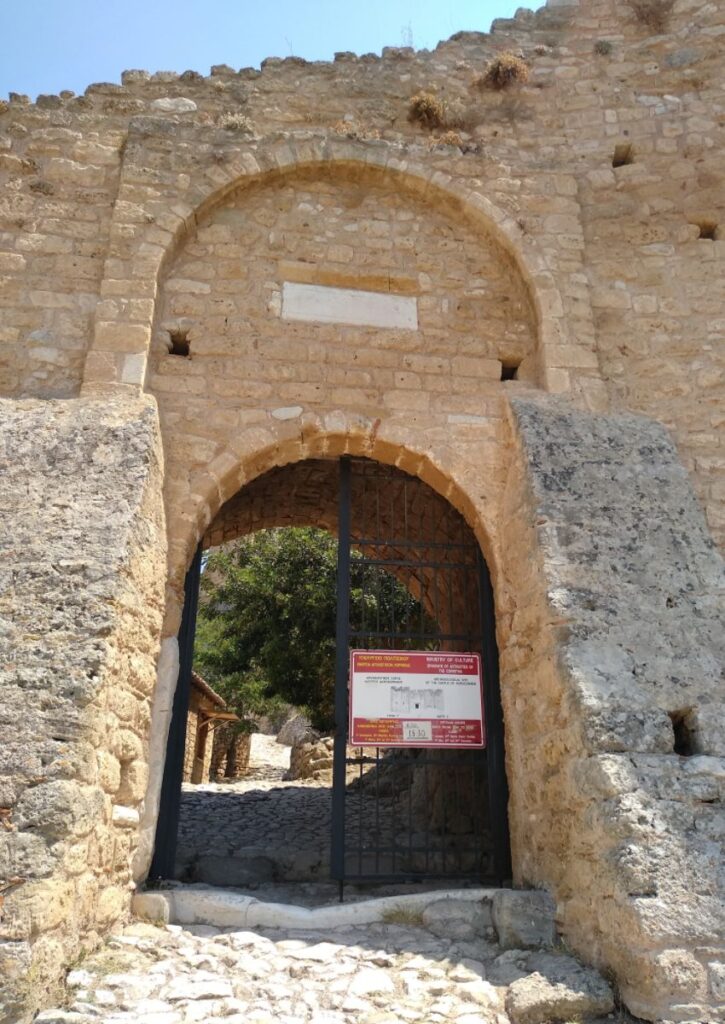
Acrocorinth is 10 minutes away from Ancient Corinth and if you are fit enough you can hike there. However, the usual way to get to Acrocorinth is to drive and follow the signs up to the mountain. There is a large parking area and a cafe under the trees where you can admire the entrance of the Castle.
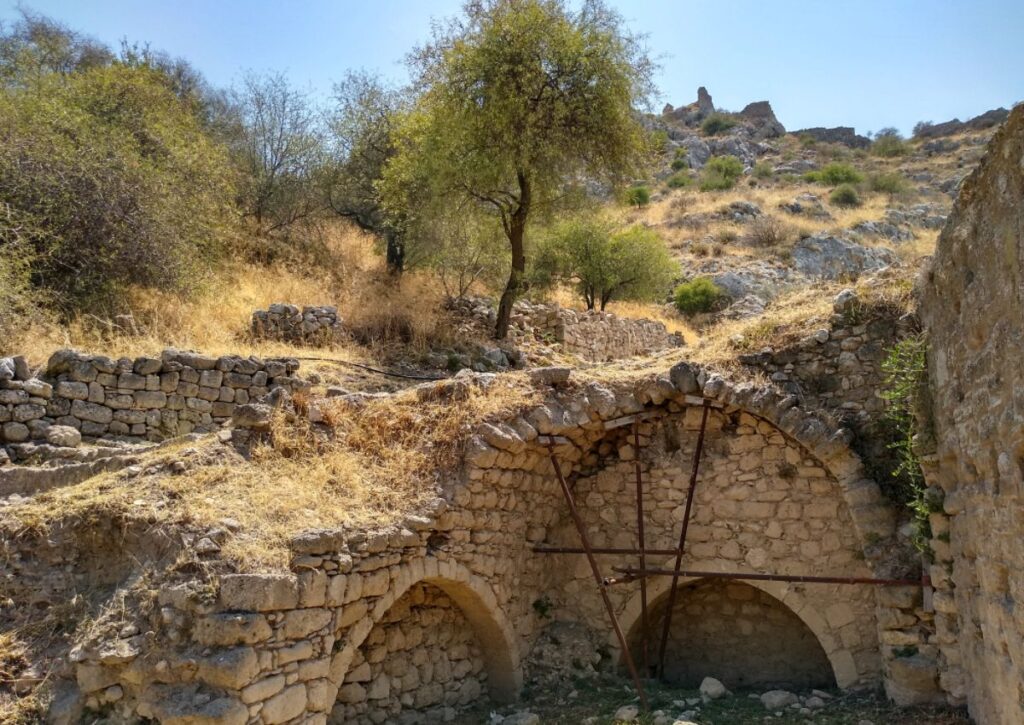
The Castle is just amazing in every sense. The mix of many religions and civilizations, the stunning 360° views of the Corinthian region from the top, the nooks, and the hidden rooms make Acrocorinth a very special and exciting destination for me.
As I was strolling Acrocorinth’s pathways, I came across the beautiful small church of Agios Dimitrios, dated probably since the 17th century.
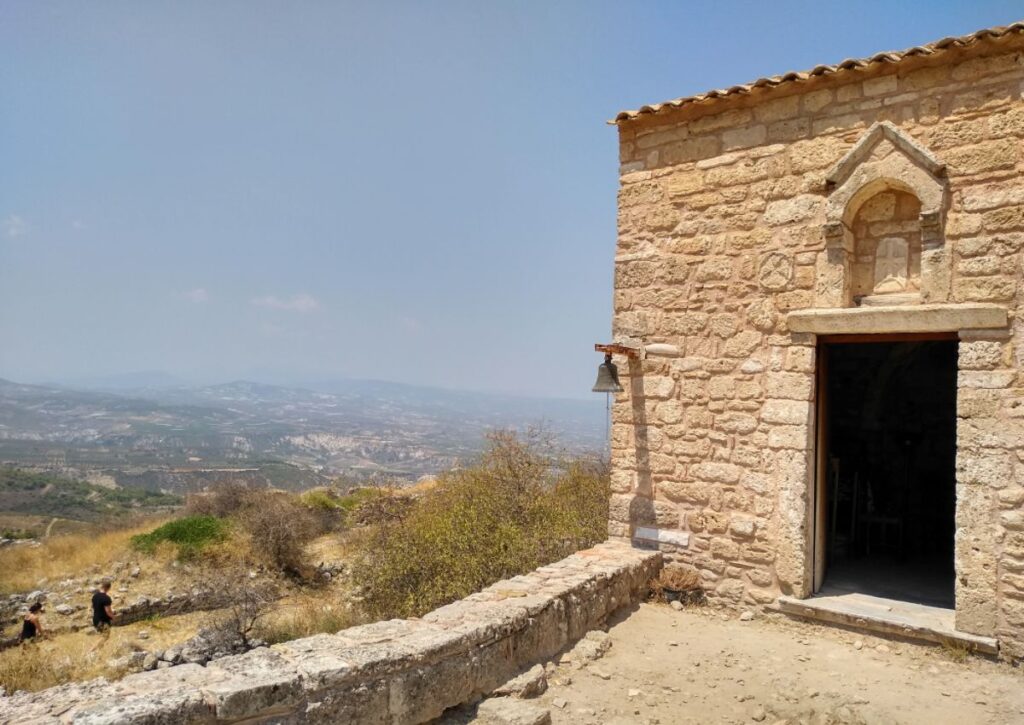
The frescos inside the chapel looked centuries old. I was all alone at the moment and I cherished the sacred atmosphere of the historic chapel.
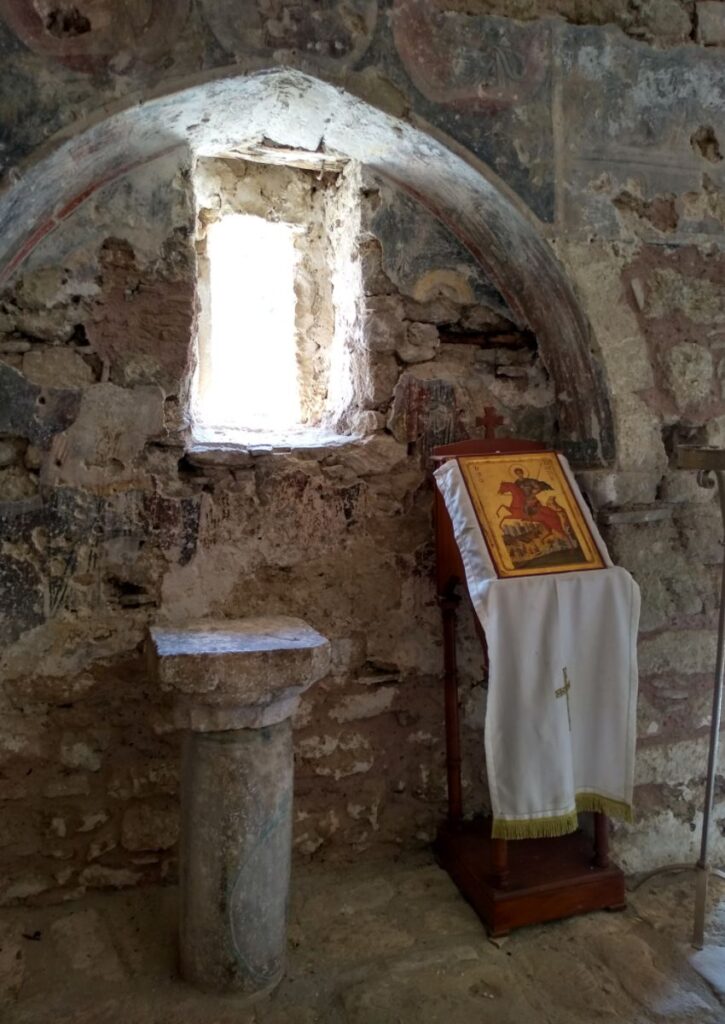
Inside the castle, there are three defensive lines and fortification gates, their constructions following the natural shape of the mountain.
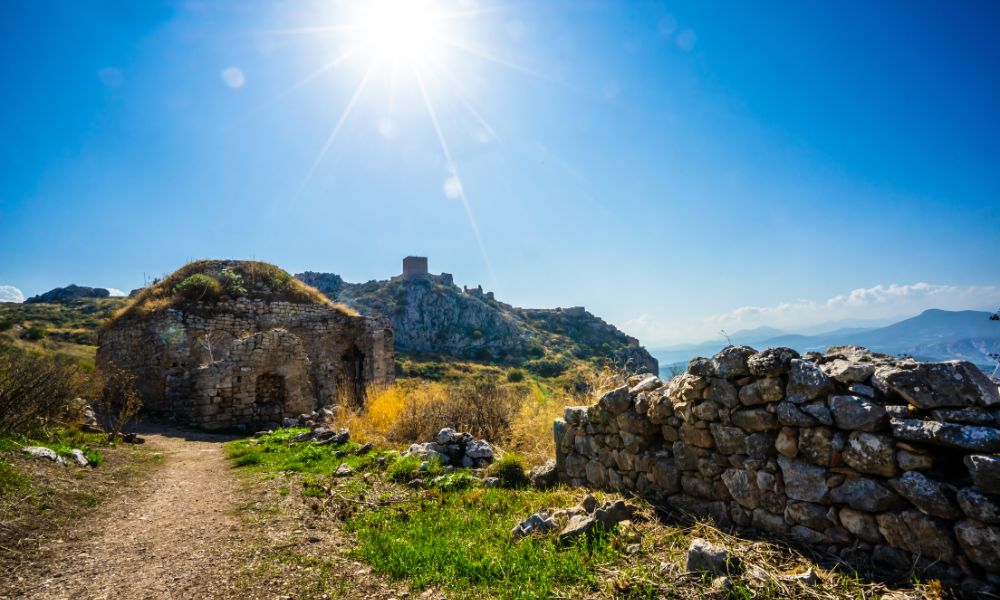
There are also traces of all the religions and civilizations that conquered Acrocorinth. There are remains of:
- the ancient Aphrodite temple and walls from the ancient Greek period
- the Roman period
- Byzantine fortifications
- Venetian constructions
- 16th-century mosque (more info about the mosque here)
- Greek Orthodox church, and the underwater Peirene cistern.
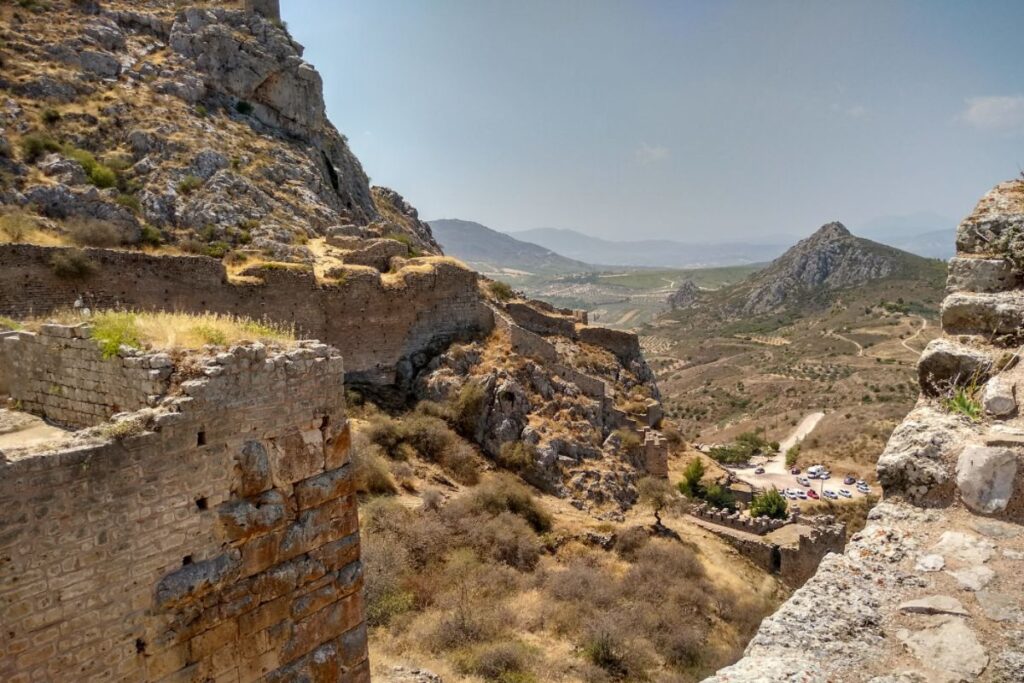
Walking towards the top of Acrocorinth and the Temple of Aphrodite, I was trying to imagine how busy this place must have been, with 1000 young women serving as sacred prostitutes. Unfortunately, today very few remain from the original Temple of Aphrodite.
Do visit the nearby Spring of Peirene and be aware of the bees that frequent the place – probably because of the water.
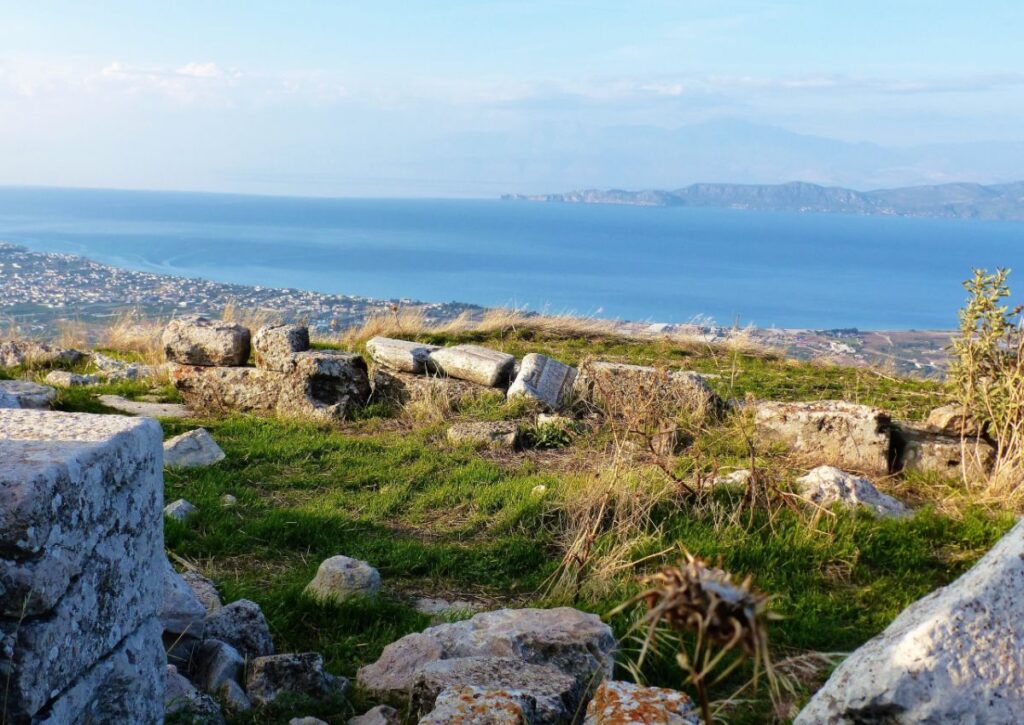
A tip of caution: There is no safety fence around the Acrocorinth site so be careful of the edges as there is a high risk of falling into the chaos if you are not careful.
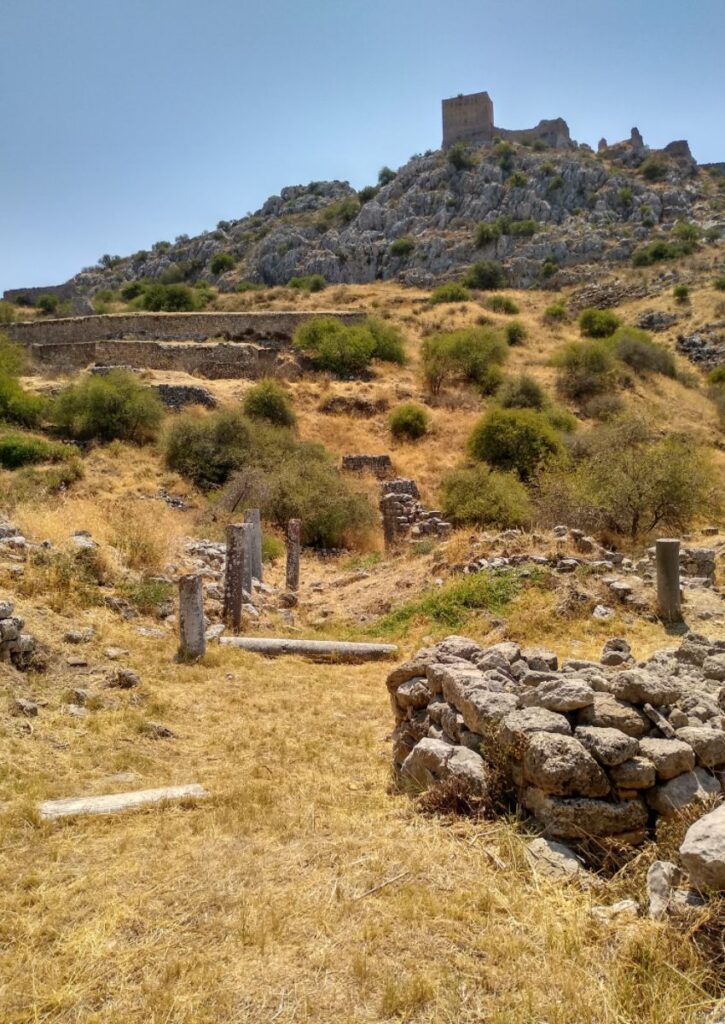
There were now more people going to the top of Acrocorinth around me and as my sister would have already sipped her Greek coffee, I started the return trip downhill, which can be slightly tricky.
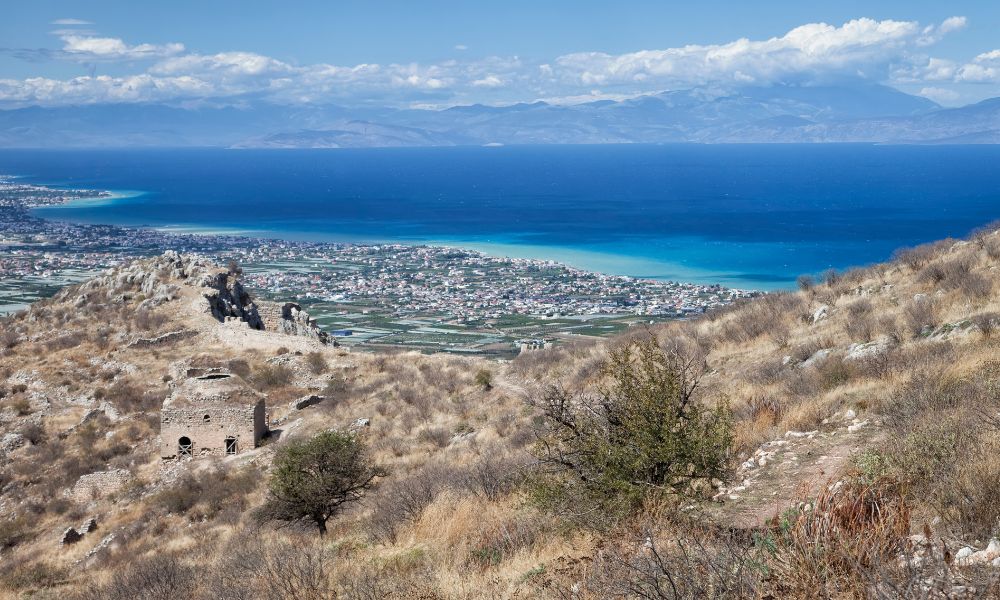
The ground is made of shiny cobblestones which are slippery and make me a bit nervous. There are in places some iron bars where you can hold on but generally speaking, you need to be extra careful.
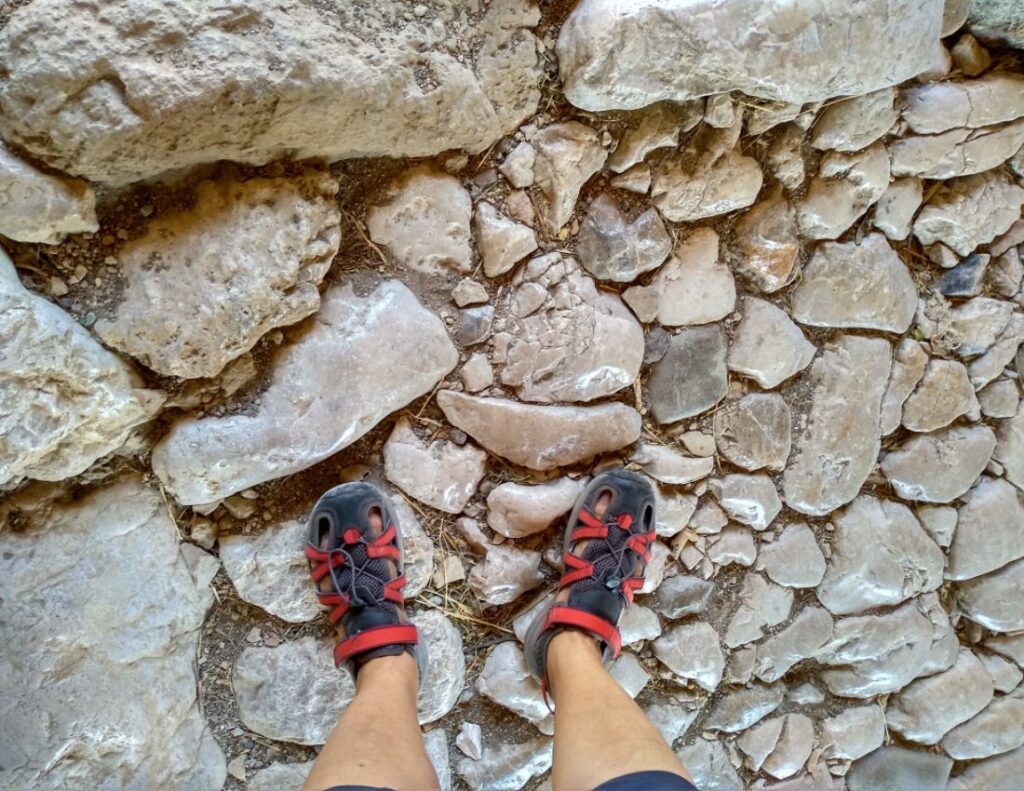
I was wearing my Teva river crossing shoes (what was I thinking?) as I had forgotten how slippery the ground is in Acrocorinth. I was OK with them but they weren’t the best shoes for this kind of terrain.
Entrance ticket: €4/€2. You can contact them at +30 27410 31266.
Remains of Ottoman Tomb – Türbe
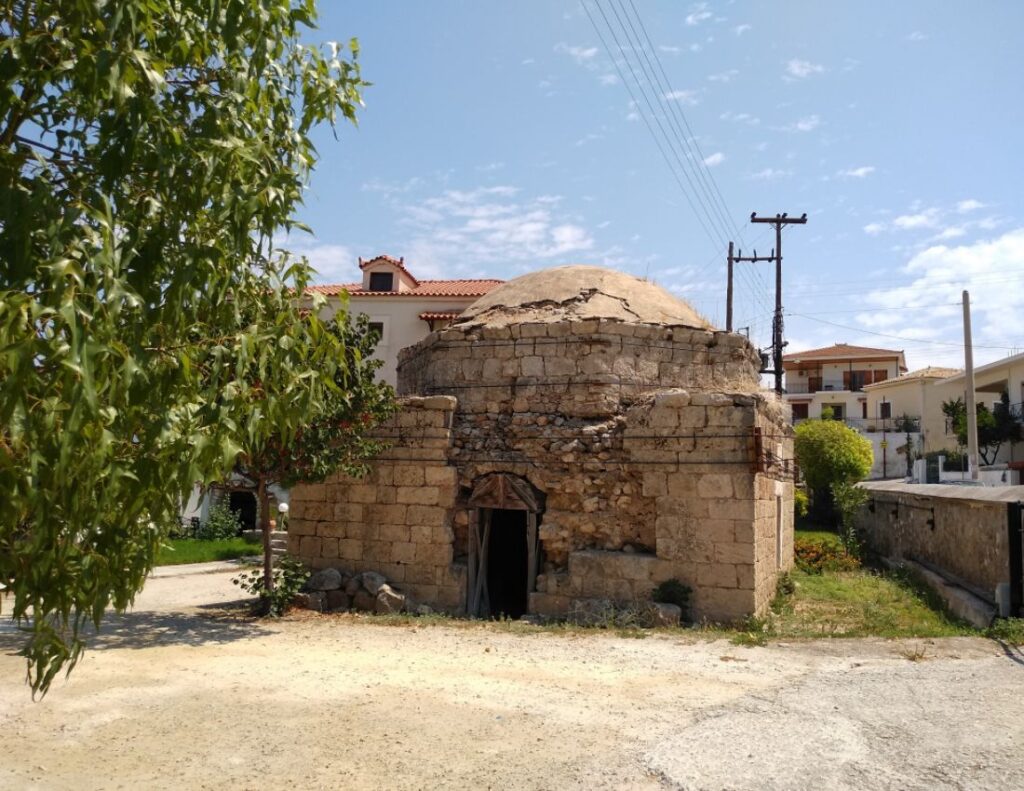
Near the Ancient Corinth Archaeological Site, you can find an Ottoman monument.
Doing some research, I found out that in the same spot there used to be a group of Ottoman buildings known as Kuliye. Kuliye, a charitable Ottoman settlement, would include a central mosque, and around it, there were other supporting buildings for eating, teaching, baths, and a hostel for the poor of the time.
Monastery of Zoodochos Pigi
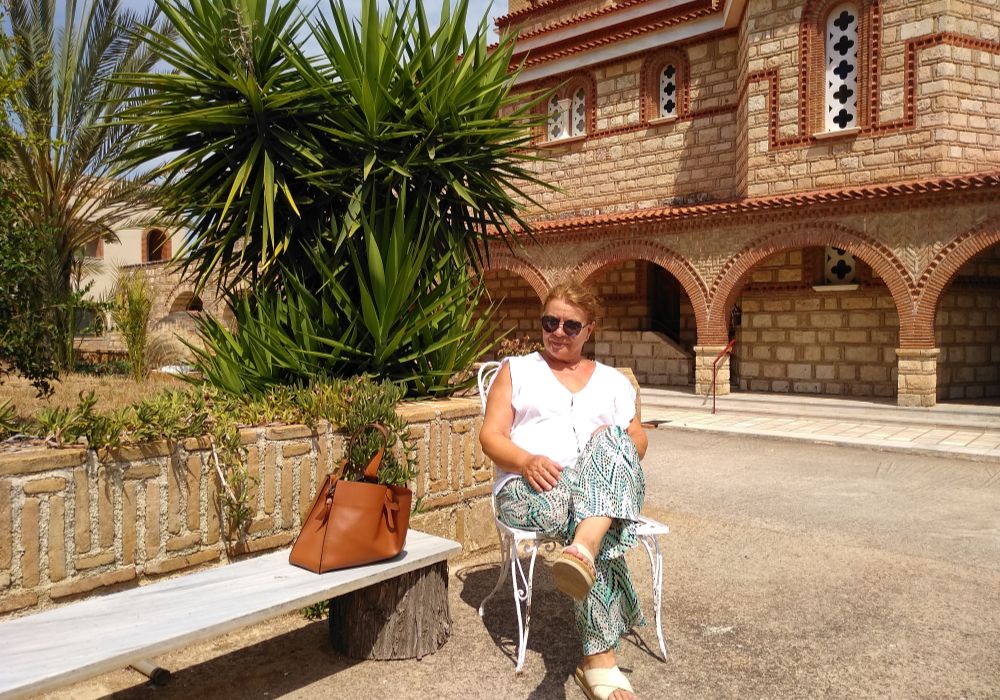
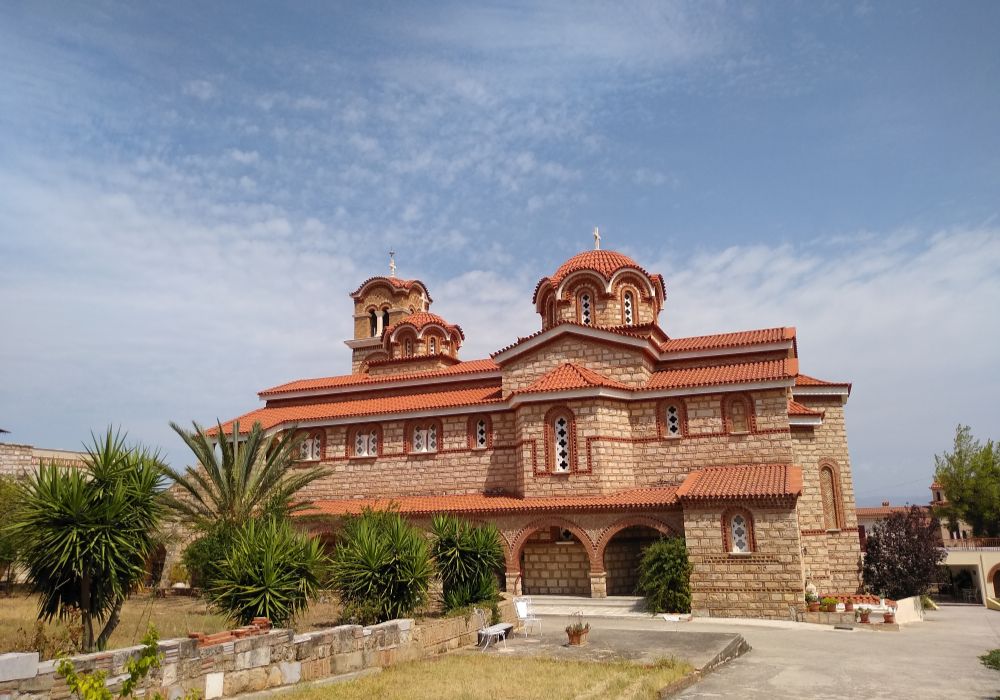
On our way to Kechries port, we made a short visit to the Monastery of Zoodochos Pigi found 2 km out of the Examilia village. It is a very impressive monastery with fantastic decoration of the church inside. The entrance is free and the best time to visit is up to 12.30 pm.
Kechries Ancient Port
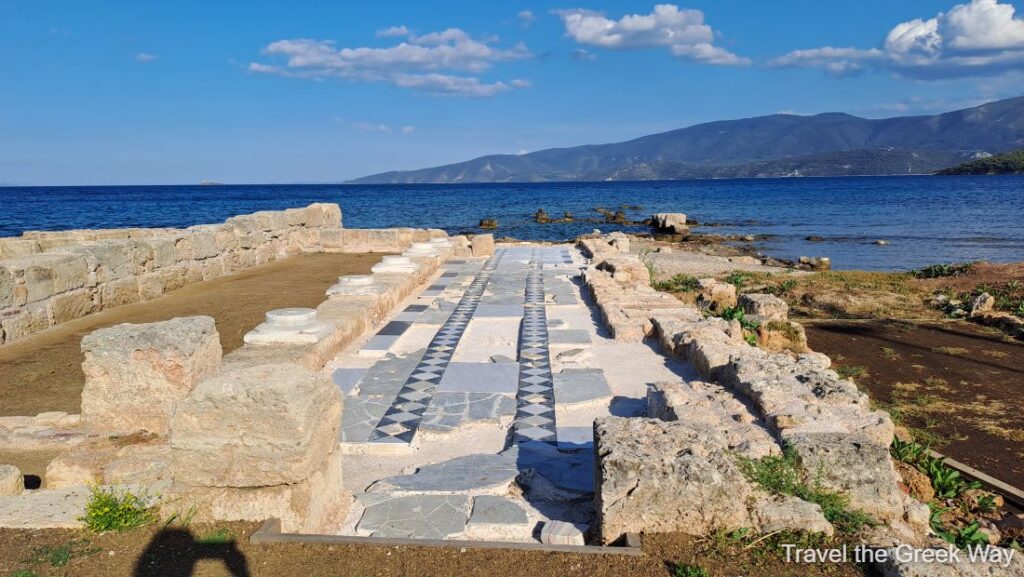
After the shortstop to the Monastery, we traveled a few km to ancient Kechries port. In total Kechries is about 11 km far from Corinth. There used to be an ancient path connecting Ancient Corinth to Kechries and Apostle Paul used this path on his way to the Kechries port when he left for Ephesus in 53 AD.
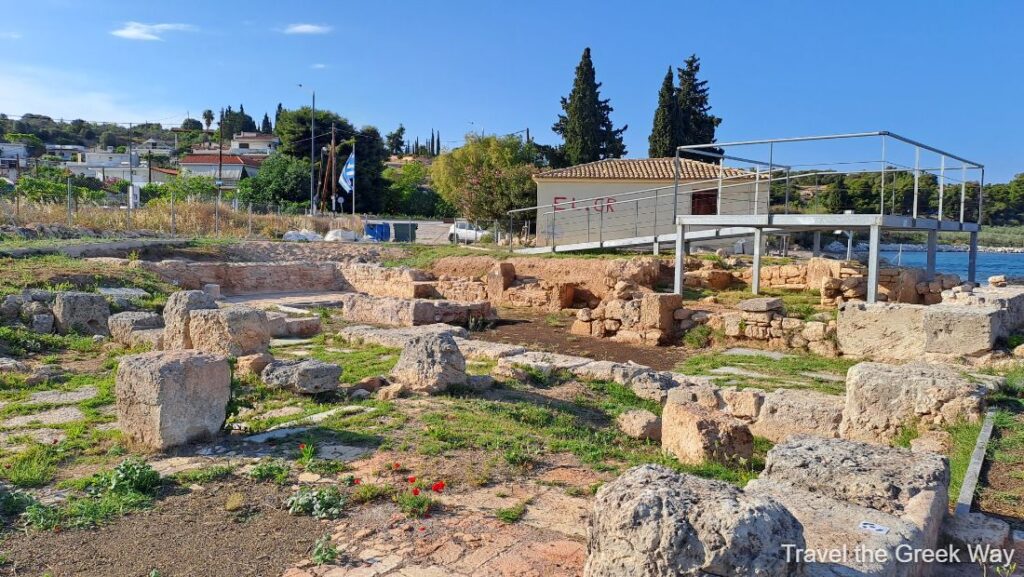
Ancient Corinth used to have two ports, the Lechaion port which can be found at the modern Corinth seaside, and Kechries, which was the commercial and the biggest port of the city. Today you can stroll (free entrance) to the once-powerful port and see at the edges of the breakwater, the small temple-form buildings possibly dedicated to Poseidon and Isis.
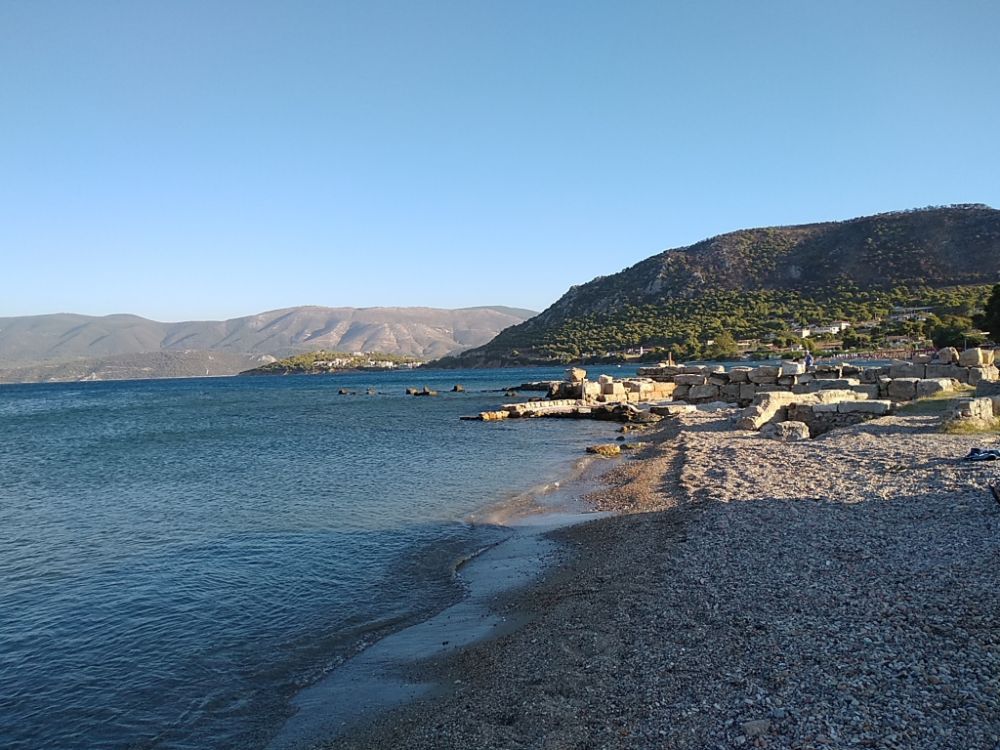
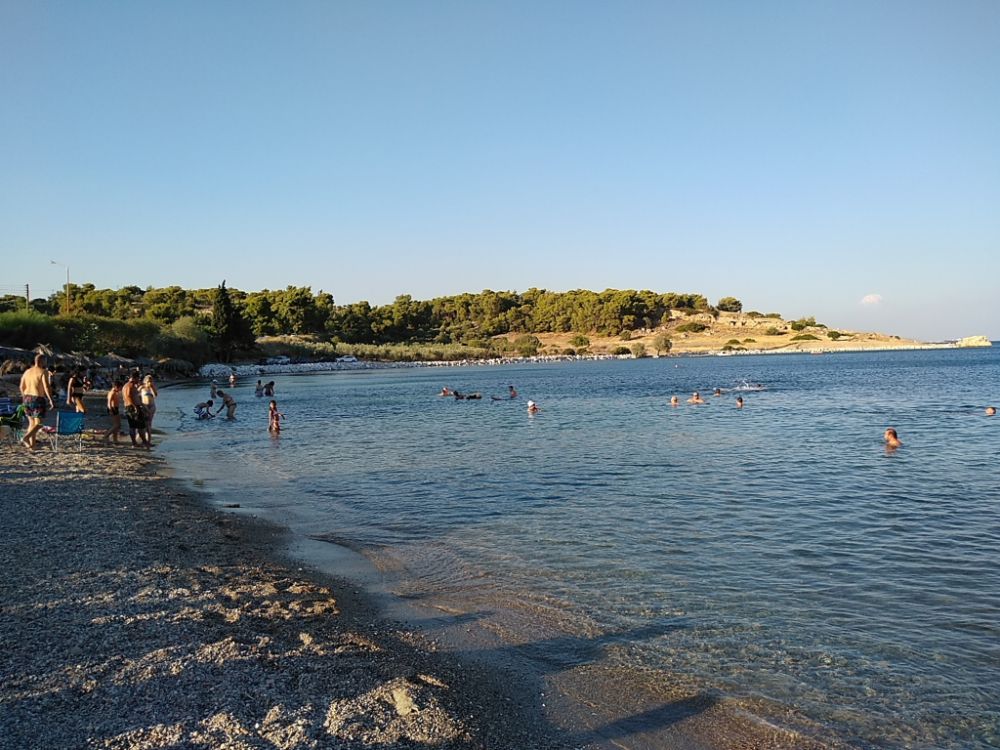
Right next to the Kechries site beach, people were swimming and enjoying the sea.
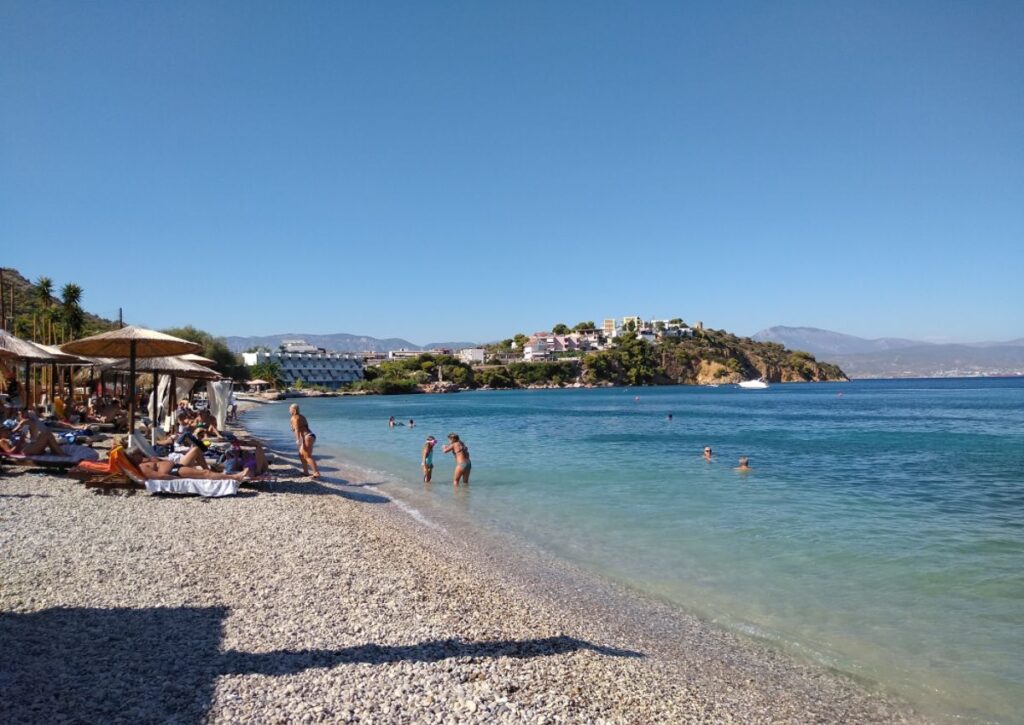
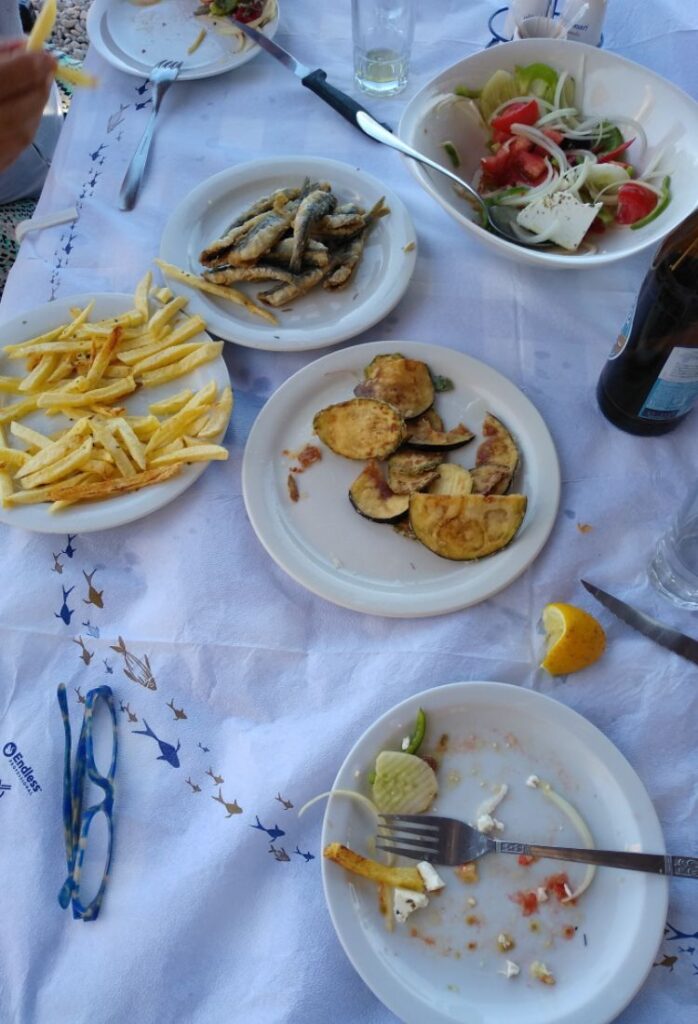
After all this activity and walking, we were both famished. We picked up a nice seaside tavern at the nearby summer resort Loutra of Oraias Elenis and had a much-needed lunch! And just one beer, no ouzo for the travelers!
Where to Stay in Corinth?
If I wanted to stay overnight in the area of Corinth, I would choose to stay in Loutraki which has much better beaches.
Loutraki is a very popular seaside summer resort, especially among Greeks, has a variety of hotels to choose from, decent nightlife, a Casino to spend your money in, and some of the best thermal spas in Greece.
Best Hotels in Loutraki
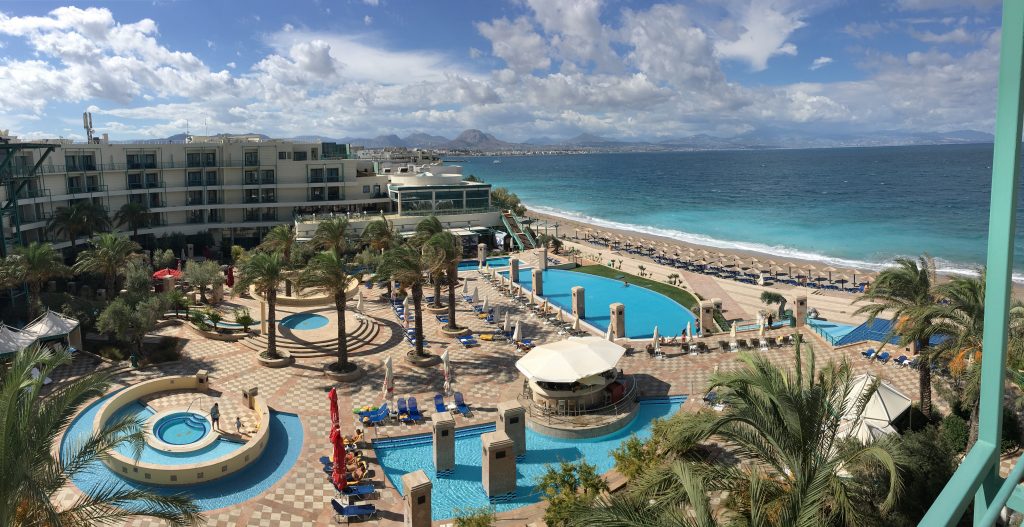
The Club Hotel Casino Loutraki is a luxurious 5-floor beachfront Casino hotel, very affordable, with exceptional spas, and is famous for its cuisine.
Hotel Excelsior is a great budget choice, centrally located with a sea view and excellent customer service.
How to Get from Athens to Corinth
Corinth is 82 km from Athens. Public buses (KTEL Kifisos) go to Corinth many times a day (chaotic website mostly in Greek).
Naturally, the best way to visit all the sites is by rental car. If you don’t like driving this Guided Tour to Ancient Corinth from Athens gets you to many of the locations mentioned in this post.
Plan My Trip to Greece
Do you need a custom travel itinerary or a transfer within Greece? Are you traveling solo, with your family or friends and need a tailor-made multi-day tour or a transfer?
If yes, please visit my dedicated Plan My Trip Page for a free itinerary!
Essential Travel Resources for Greece
- ‘Hello’ and ‘Thank You’ in Greek: “Ya sou” and “Efharisto”
- Booking.com: I use Booking.com mostly for Europe. It has over 1 Million properties to choose from, including everything from hotels to apartments and even hostels. And free cancellation!
- Expedia: I use Expedia for the best hotel descriptions and amenities and a rewards points system for the rest of the world.
- All-Inclusive Resorts in Greece
- FerryScanner to book ferries to the Greek Islands
- Rent an Affordable Car in Greece
- Athens Metro Website (timetables and ticket info)
- Map of Athens Metro
- Trains (Hellenic Train)
- Public Buses KTEL
- Get Your Guide: For all your day or multi-day tours and city guide needs, I use Get Your Guide
- Emergency Numbers Anywhere in Greece: AMBULANCE 166 – FIRE 199 – POLICE 100– EMERGENCY NUMBER 112
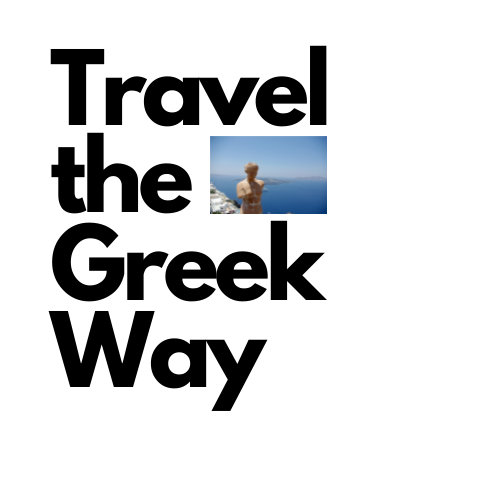
Great post! Have never been to Corinth, must put in on the list!
Thanks, Fred! Add Corinth to the long list we can visit together when you come back again to Greece!
Thanks for your great information! We are visiting in October, 6 adults and our grandchildren ages 6-16. We have booked a snorkeling adventure one morning and will have the remainder of that day before returning to Athens early evening (by about 8pm). We’re interested in seeing Acrocorinth and Ancient Corinth, as well as the theater at Epidaurus and possibly strolling Nafplio before dinner and returning to Athens. In you opinion is that cramming too much into one day? We will also visit Rhodes Town and Lindos so I’m wondering if we should skip Nafplio and do a better job understanding Corinth and Epidaurus. What would be your advice for our group? Thanks!